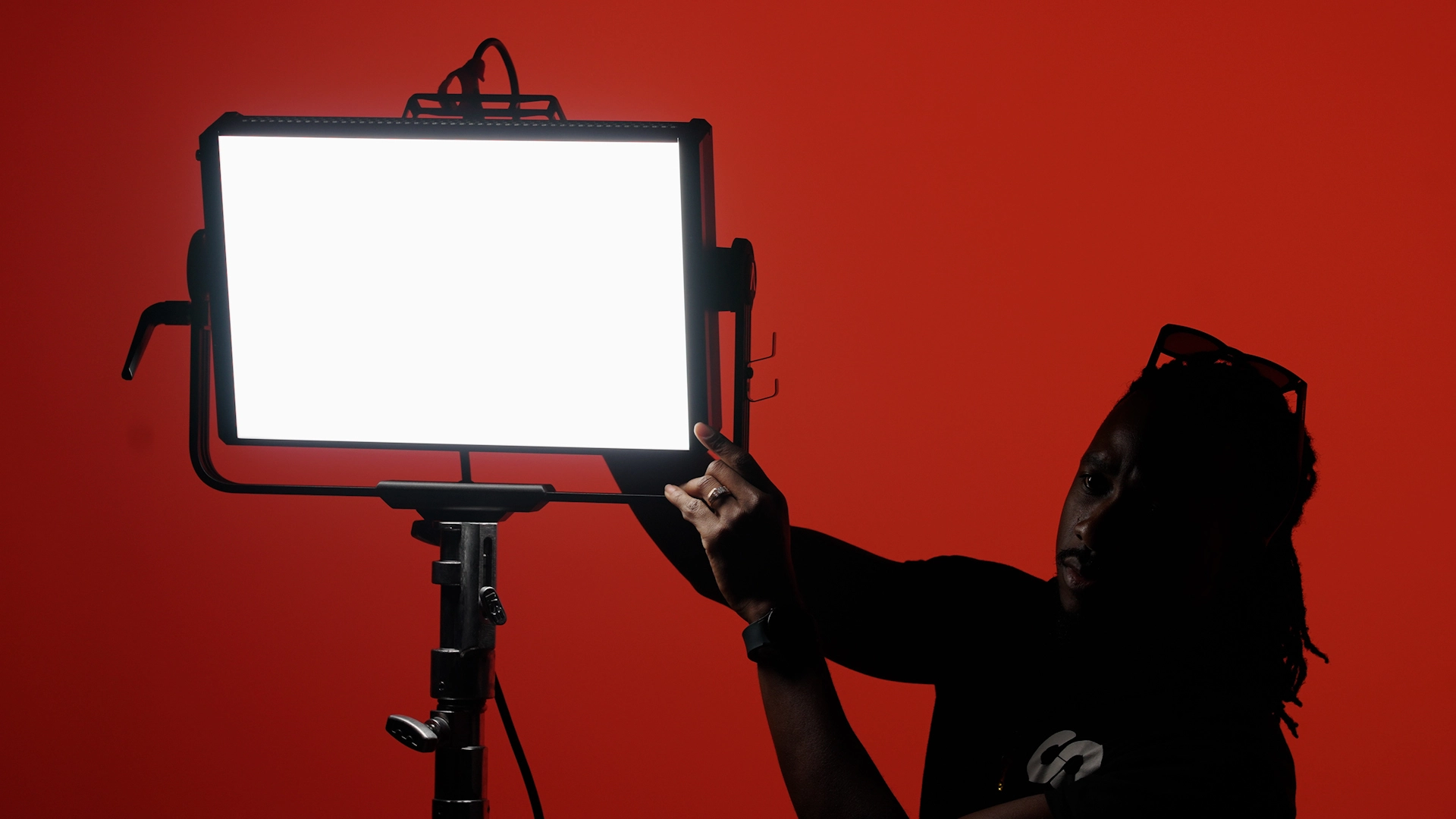No matter what kind of video you’re shooting, your choice of lighting will always be paramount in giving off the mood and the message you intend. To help you figure out the best lighting setup for your needs, we’ve compiled a list of some of the most useful lighting techniques in video making.
Different Types of Lighting Techniques in Cinematography
3-Point Lighting
The 3-point lighting setup is probably the first one you picture when imagining a photo or video shoot. This technique uses three major components: a key light, a fill light and a backlight. The key light is “key” because it will directly illuminate your subject, but the fill light and backlight also fulfill important jobs. The fill light is typically softer than the key, lighting up the shadow areas in your shoot, while the backlight behind your subject works to accentuate their form. You can experiment with the relative intensities of these lights, too, to get your desired ratio of shadow to light. Because of this, 3-point lighting is a versatile technique that video makers frequently use.
5-Point Lighting
The 5-point lighting technique is basically the 3-point lighting technique, but with (you guessed it!) 2 additional lights: the kicker and the set. The kicker light focuses on an additional object to bring the viewer’s attention to it, while the set light illuminates the subject’s background. This setup works great if you want some extra focus on a particular object or area, or even if you just want some extra light in your shot.
Green Screen Lighting
We’ve covered this lighting technique in a previous post, and it’s an essential one if you want to use a green screen. You’re going to use your fill light and backlight the same way you use them in 3-point lighting, to fill in shadows and define the silhouette of your subject. But for green screen lighting, you’re going to need two key lights: a subject key light to illuminate your subject, and a background key light to help your subject stand out against the green screen backdrop. You can learn more about green screen lighting essentials here.
Outdoor Lighting
For certain videos you may choose to film outside. Though lighting might be less straightforward outdoors—you can easily adjust a lamp or lighting fixture, but it’s a bit harder to adjust the sun—you have options for making sure your footage comes out the way you want it. You’ll want to pay attention to where the sun is, positioning your subject with the sunlight’s direction in mind. You’ll also need some special equipment, such as diffusers to control the sunlight’s intensity and to protect your subject’s eyes from those UV rays, and reflectors to bounce the sunlight and gain more control over how it’s hitting your subject.
Choosing the right lighting is essential to producing a successful video. We hope this article helped you learn some basics on how to set up lighting for videos.
If you are looking for a professional video production company in Charleston to do shoot your next video, contact Craft Creative.












